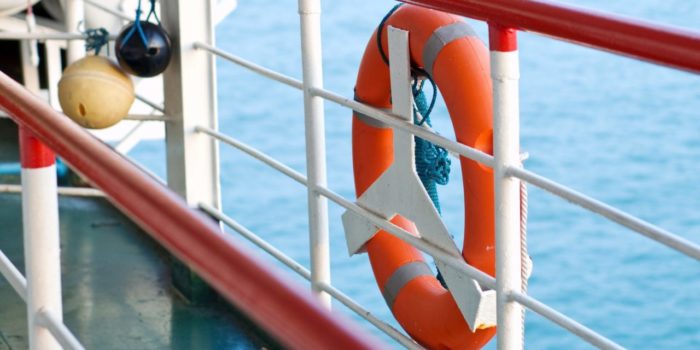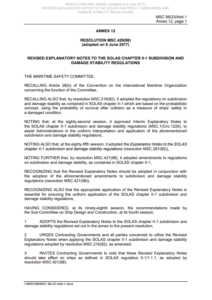2019 is considered a busy year for the shipping industry and the IMO, especially with the upcoming SOLAS amendments. In fact, special consideration should be given to amendments to SOLAS Chapter II-1 on damage stability, which came into force in 2009.
Amendments to SOLAS Chapter II-1 aim to harmonise cargo ship and passenger ship damage stability, as they made probabilistic damage stability the main method for calculating damage stability for passenger ships and general cargo ships.
[smlsubform prepend=”GET THE SAFETY4SEA IN YOUR INBOX!” showname=false emailtxt=”” emailholder=”Enter your email address” showsubmit=true submittxt=”Submit” jsthanks=false thankyou=”Thank you for subscribing to our mailing list”]
The philosophy behind the probabilistic concept is that two different ships with the same attained index are of equal safety and, therefore, there is no need for special treatment of specific parts of the ship, even if they are able to survive different damages. The only areas which are given special attention in the regulations are the forward and bottom regions, which are dealt with by special subdivision rules provided for cases of ramming and grounding.
What is more, It was necessary to include a deterministic ‘minor damage’ on top of the probabilistic regulations for passenger ships to avoid ships being designed with what might be perceived as unacceptably vulnerable spots in some part of their length.
It is easily recognized that there are many factors that will affect the final consequences of hull damage to a ship. These factors are random and their influence is different for ships with different characteristics
IMO said.
When these amendments applied, the need for several revisions was clear. For this reason, the IMO carried out a major review of the subdivision and damage stability requirements in Chapter II-1 of SOLAS.
Among others, key changes include:
- The need of limiting stability information to contain trim;
- Changing the required subdivision index, R, for passenger vessels;
- Amending the calculation for S factor.
- Limits regarding the distance between small wells and the keel line unless a damage stability check is made and the introduction of a minimum limit for the vertical damage extent. It also permitted a butterfly valve at the collision bulkhead on cargo ships;
- Testing of watertight hatches;
- Air pipes must terminate in a superstructure to be considered unprotected openings unless equipped with a watertight means of closure;
- Removing the possibility of leaving watertight doors open.
These amendments need to be incorporated into the ships’ design as from from 1 January 2020.
You may see further information in the following PDF






































![]](https://safety4sea.com/wp-content/uploads/2024/06/shutterstock_2318996555-350x250.jpg)




























My question is that what are the implications of draft amendments to SOLAS chapterII-I concerning doors, hatches and valves which pierce water tight boundaries? I want to get appropriate answer
There are options of answered (A) There will be clear description and hatches, water tight bulkheads and other requirements will be clear. (B) There will be more choice available for valves type at the collision bulkheads and other requirements will be clear (C) There will be full choice available for valve type at water tight bulkheads and other requirements will be clear (D) There will be no choice available for valve type at the collision bulkheads and other requirements will be clear.